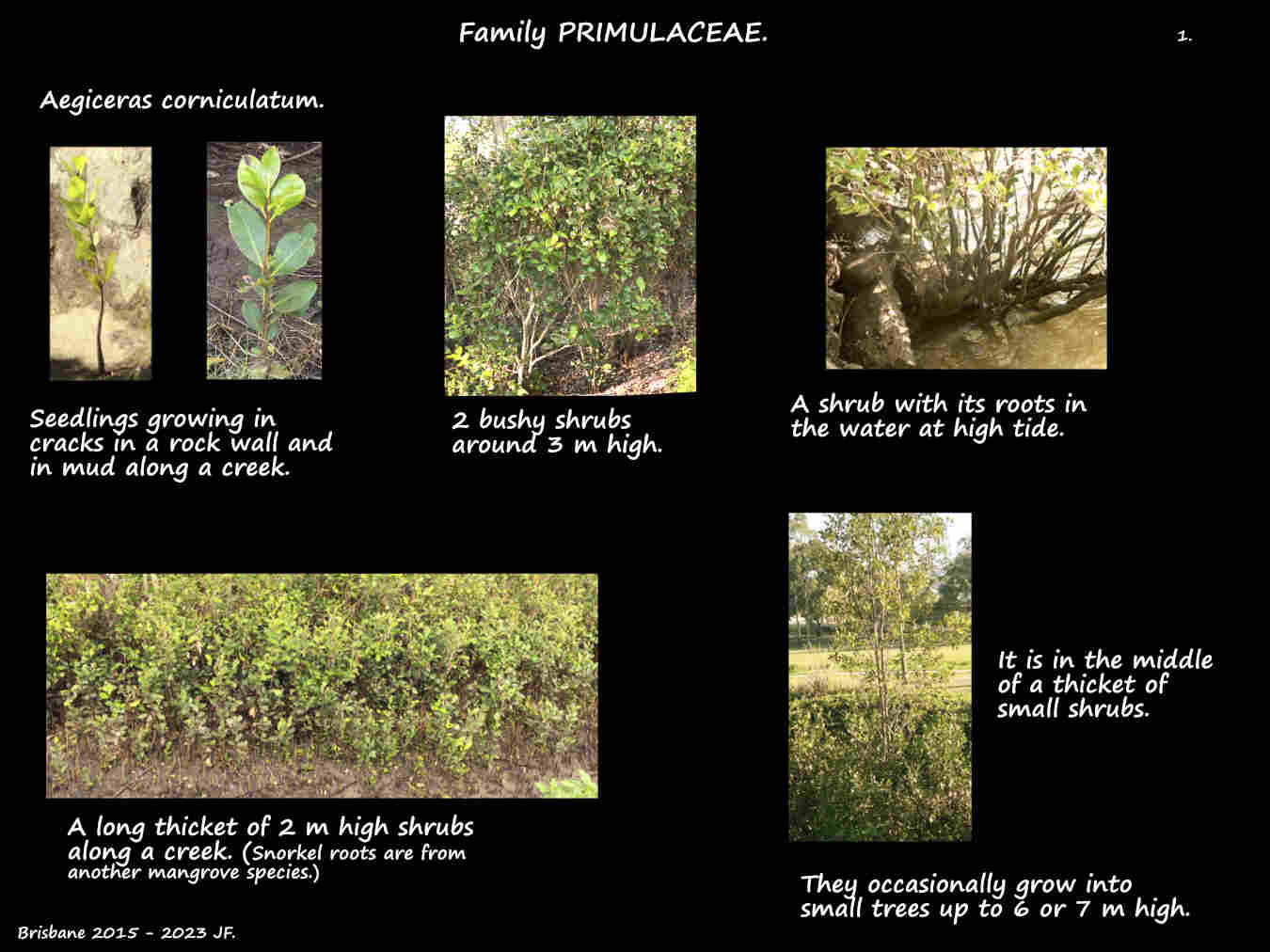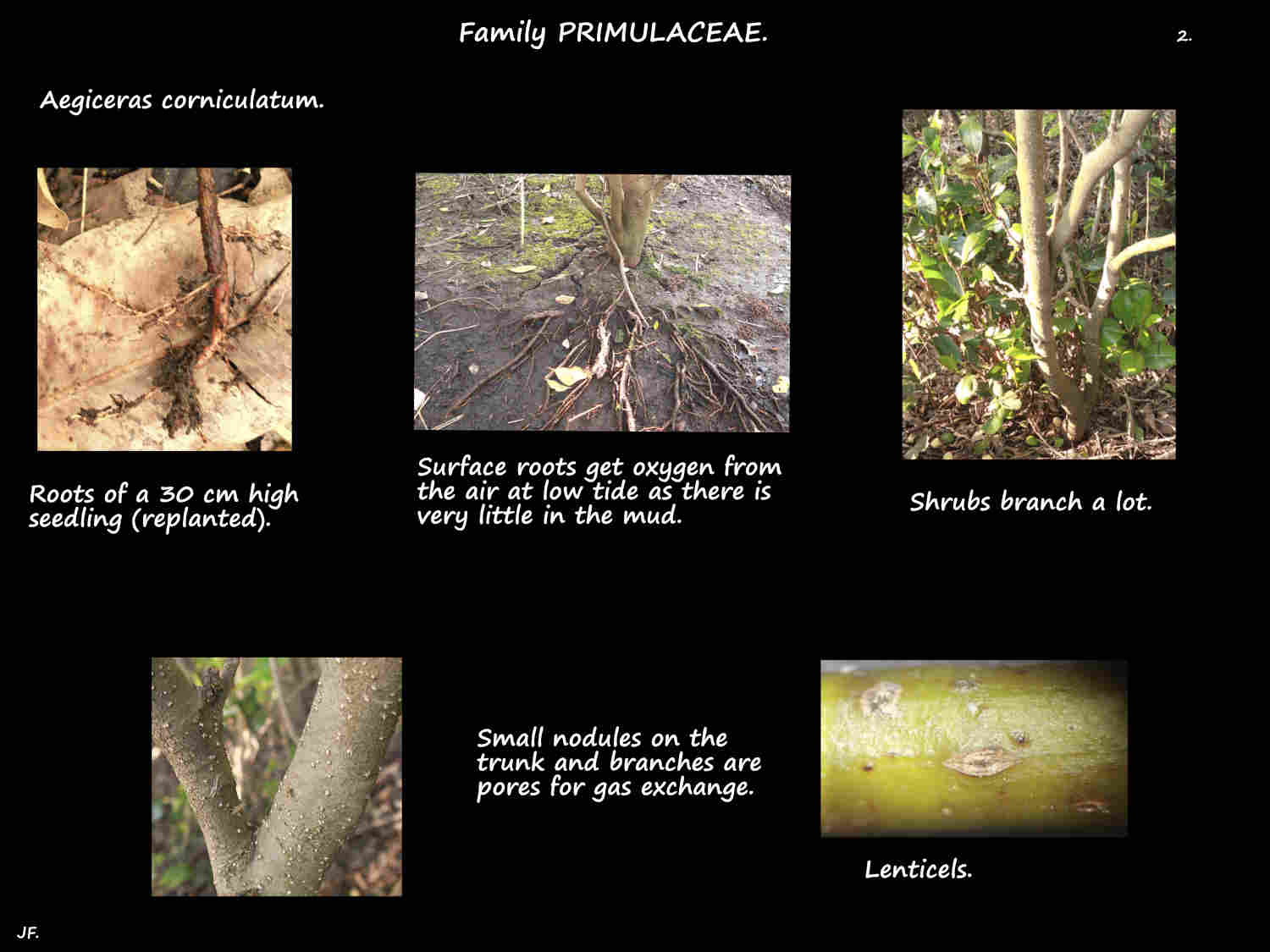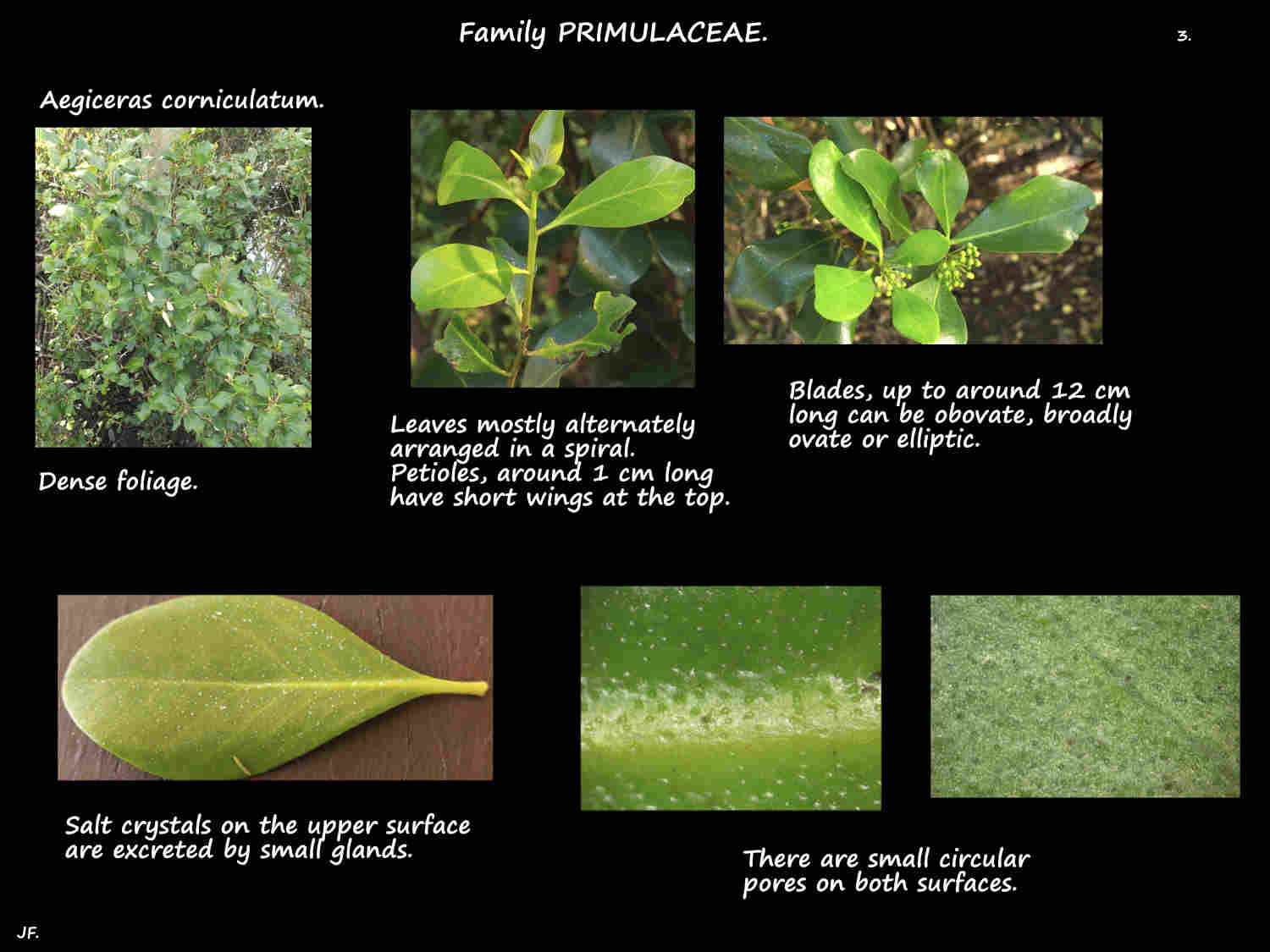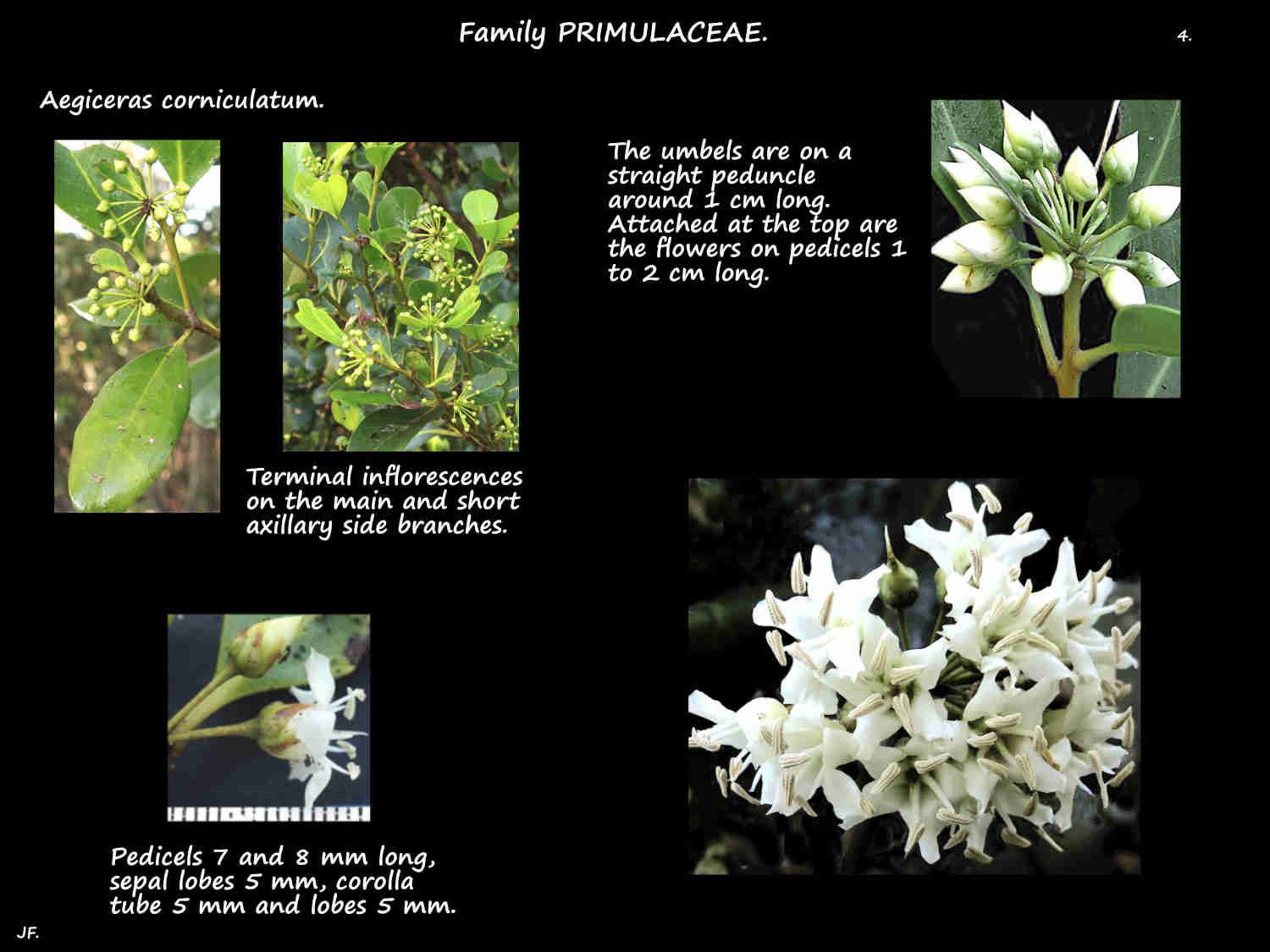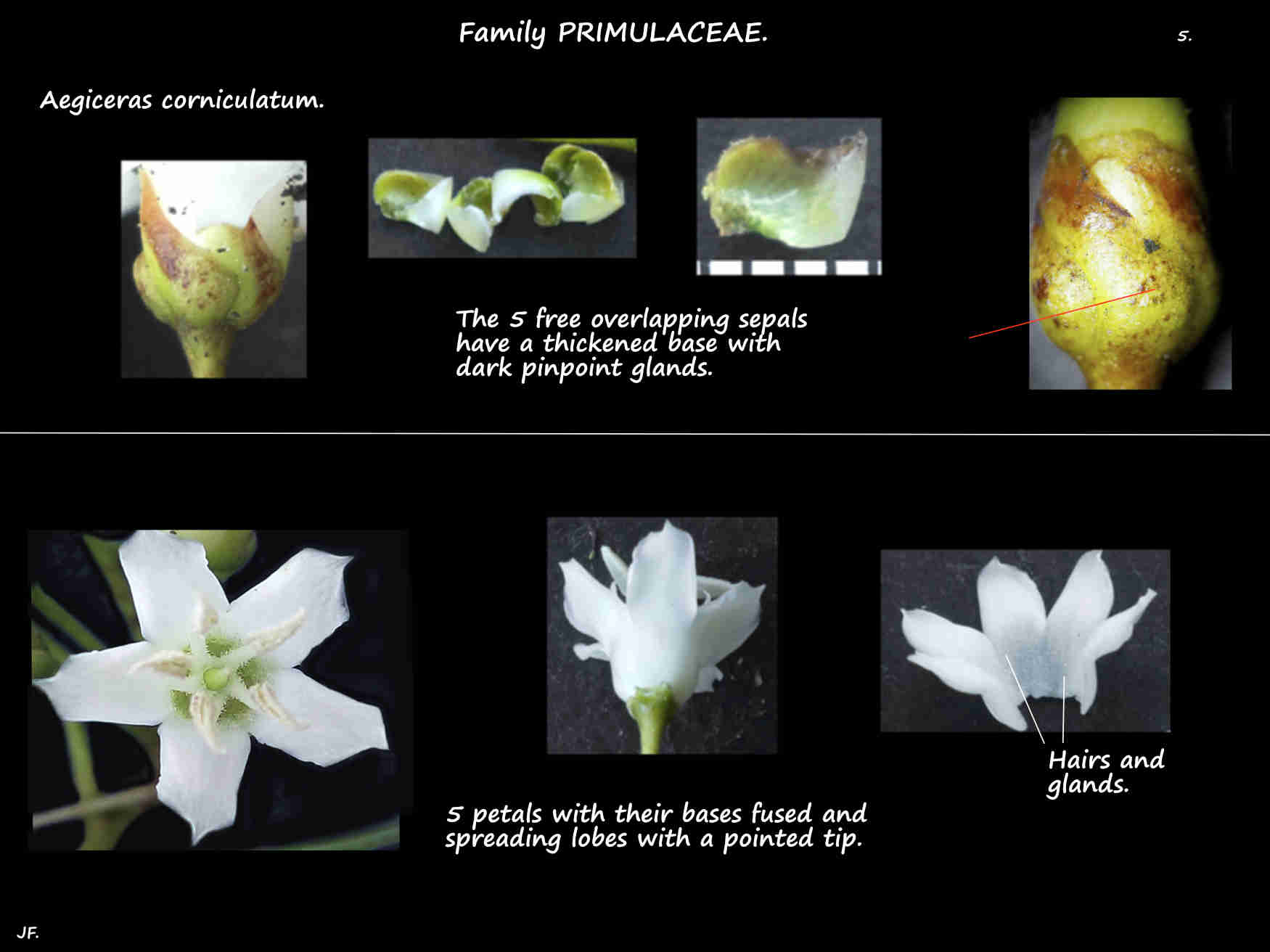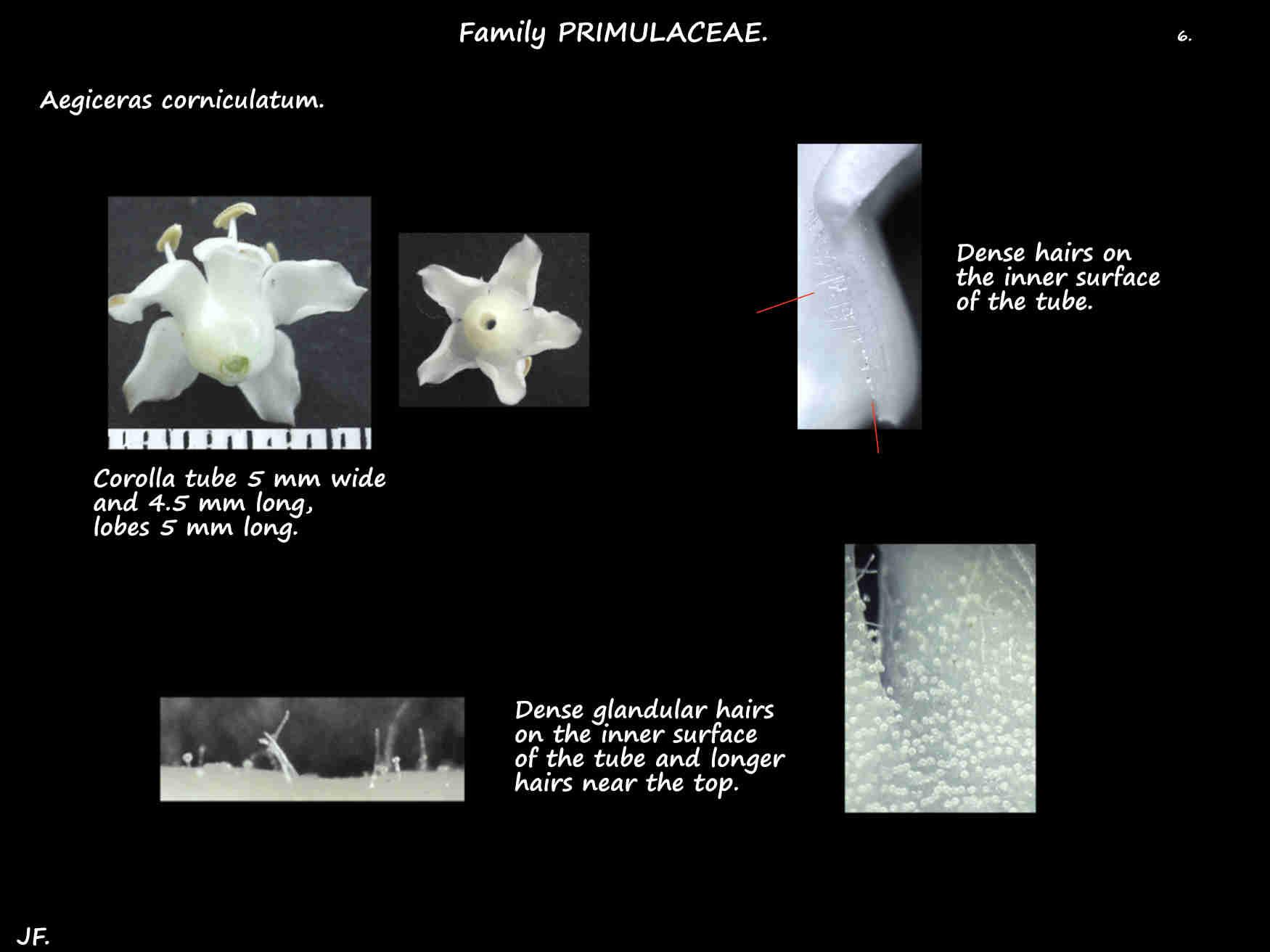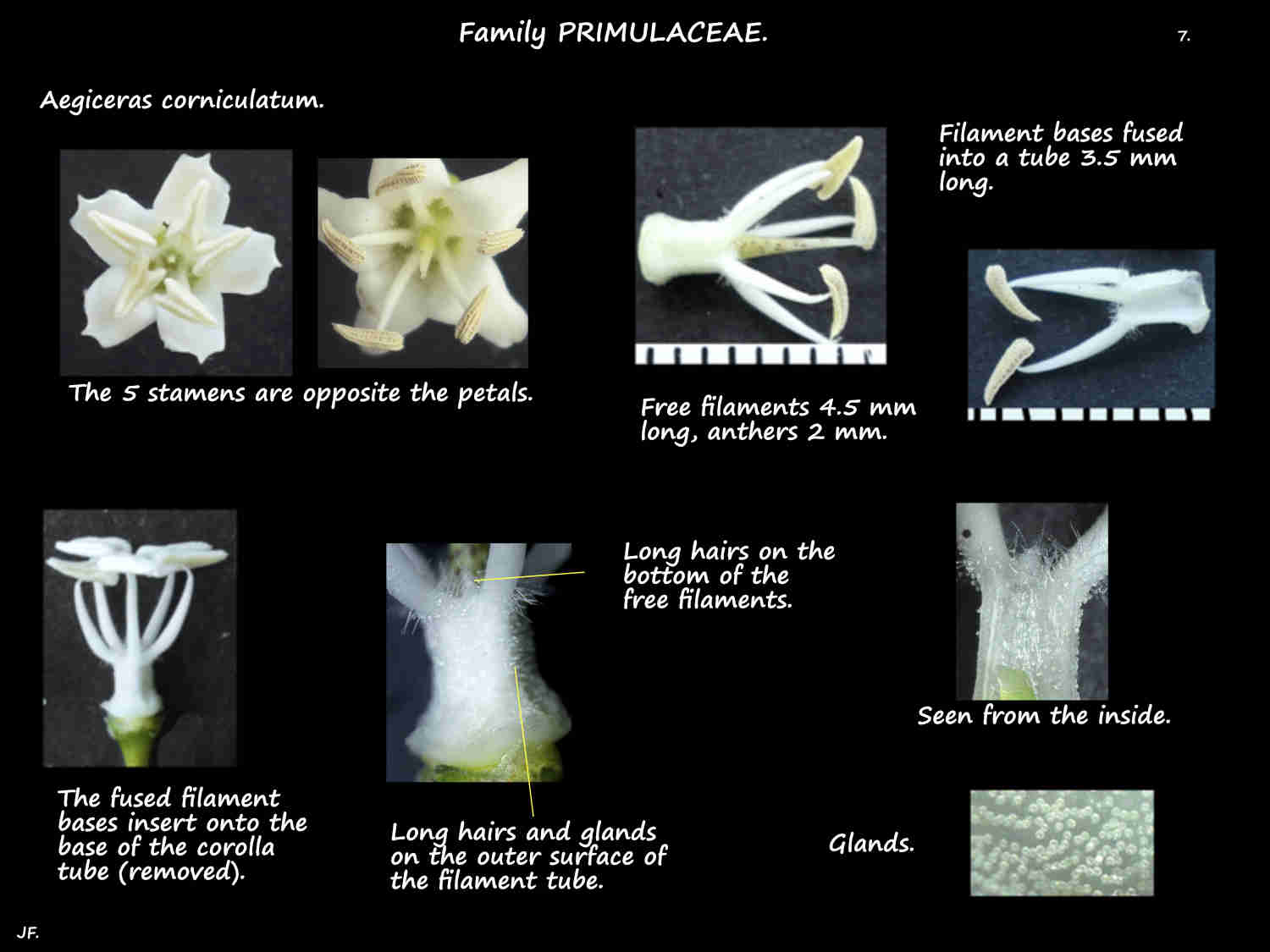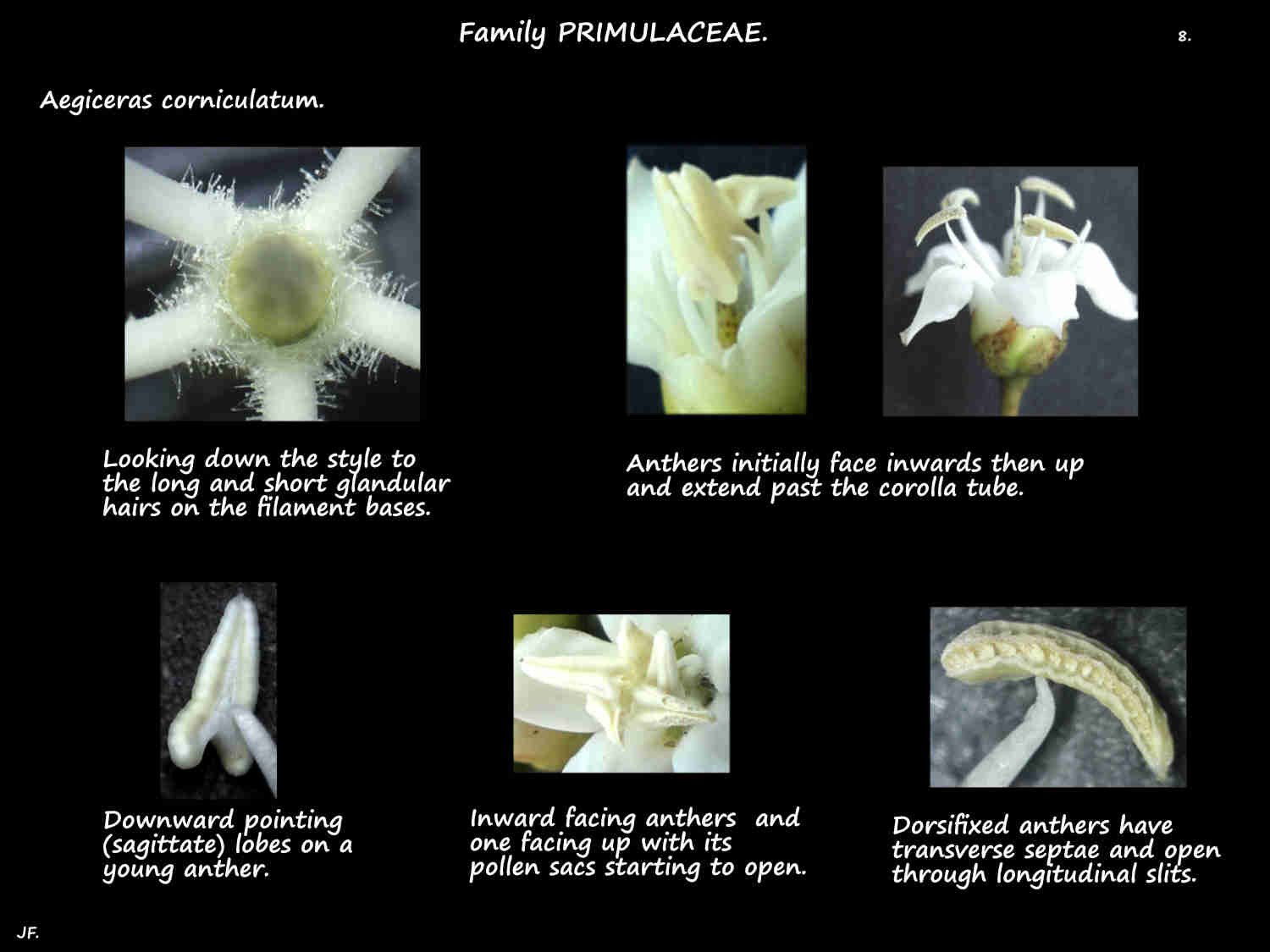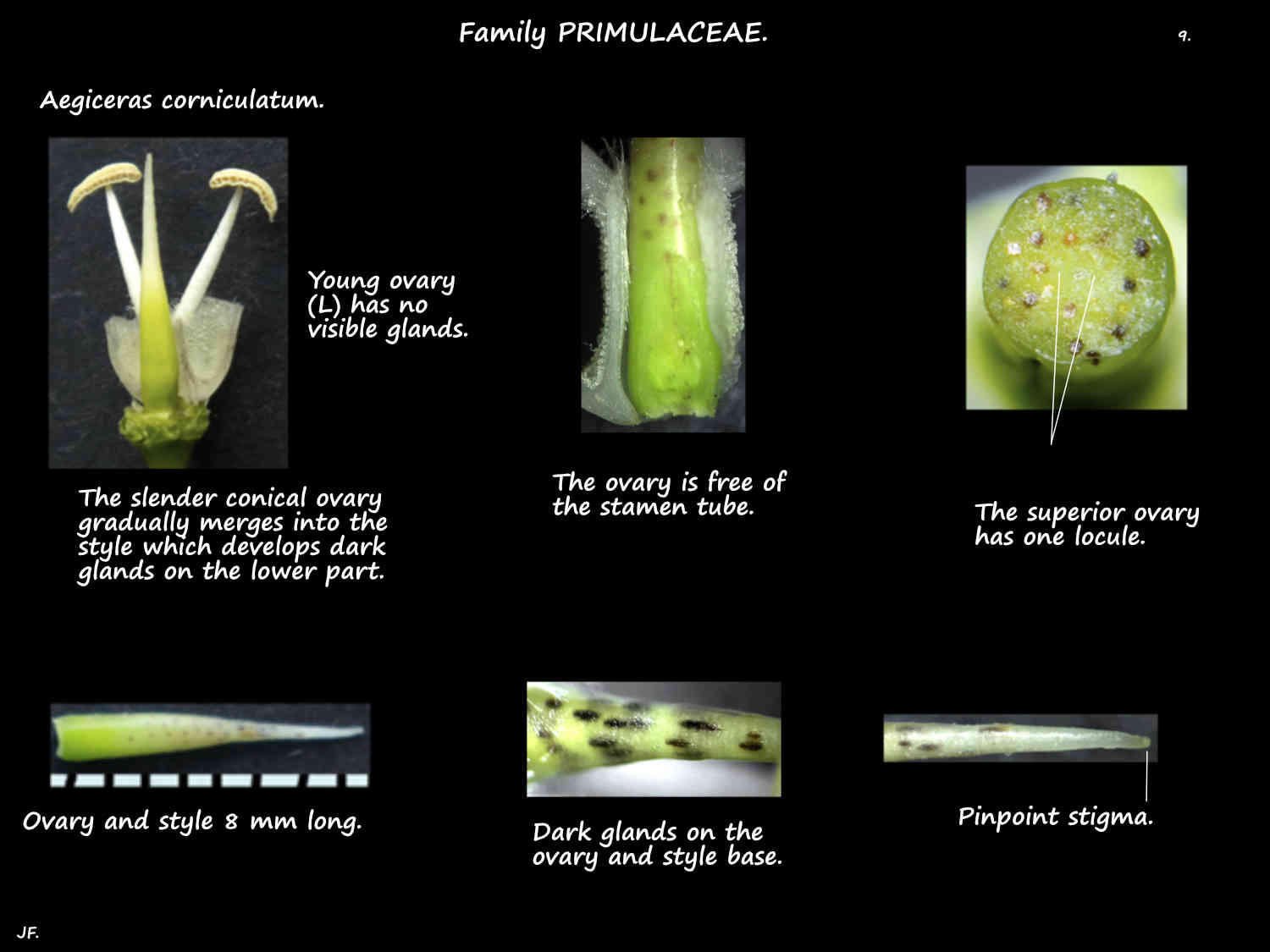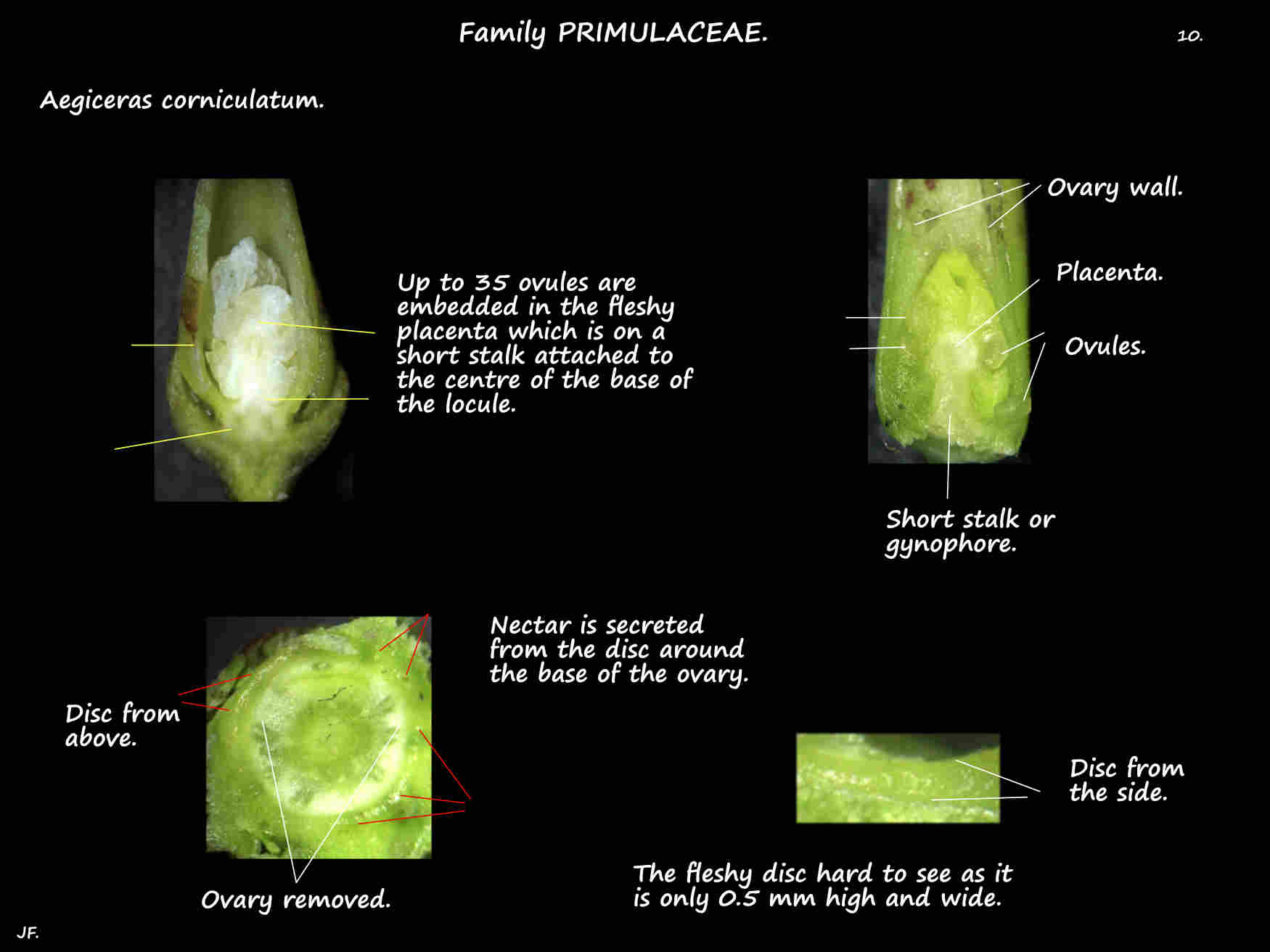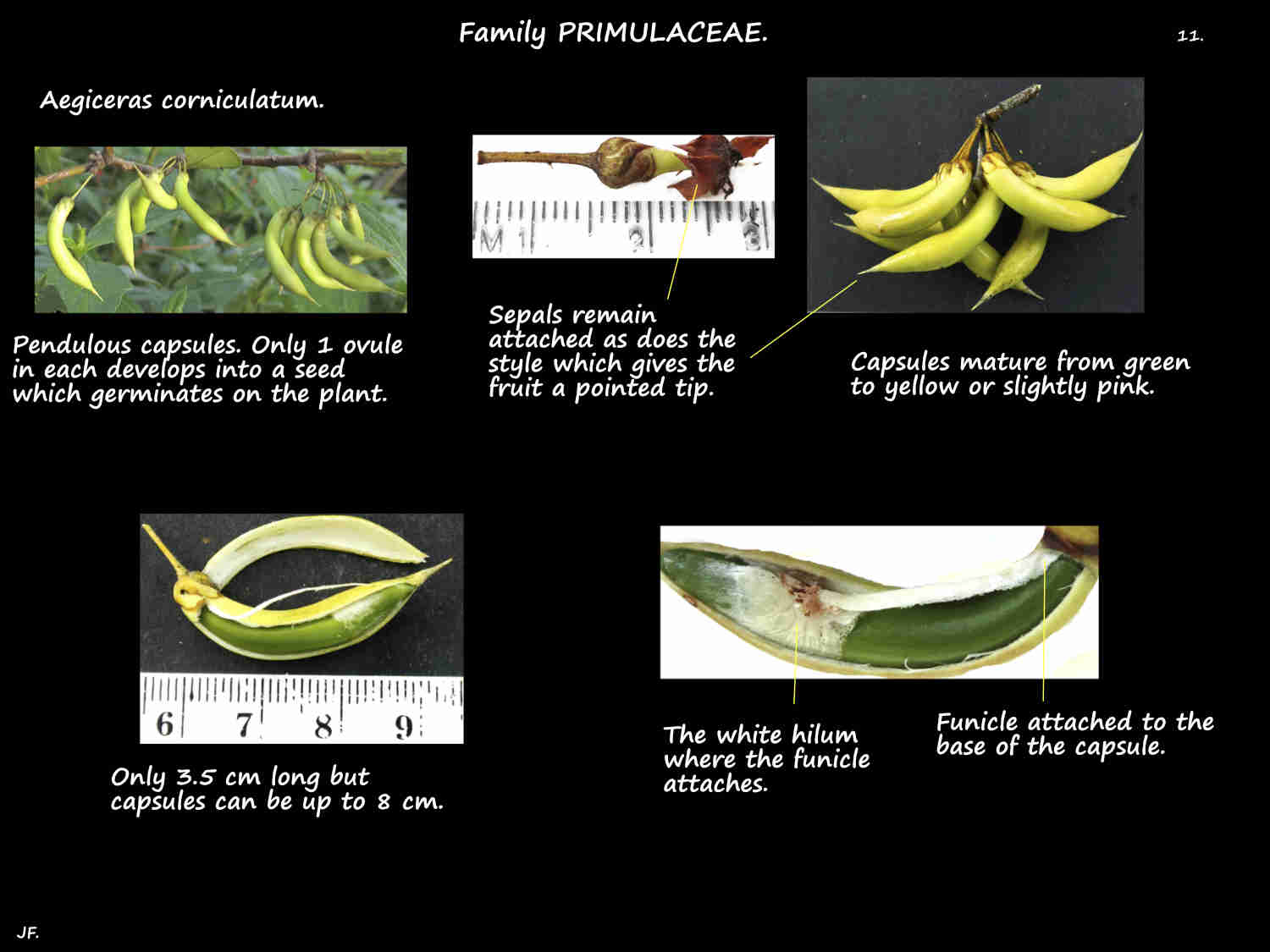Aegiceras corniculatum.
This is one of the 3 Aegiceras species in the Myrsinoideae subfamily of Primulaceae s.l. or the old family Myrsinaceae.
They are commonly known as the River Mangrove or just Mangrove.
Some sources list Black Mangrove as well but according to the Australian Institute of Marine Science this is the common name for the 2 Lumnitzera species found in S. E. Queensland.
Compared to Aegiceras they have smaller light green leaves with a notch at the tip and no salt glands.
Aegiceras corniculatum is one of the most common mangroves seen in the Brisbane area often growing among the taller Grey mangroves (Avicennia marina).
They grow along the wet muddy banks of tidal creeks and rivers where their bases are regularly covered by fresh, salty or brackish water.
The evergreen plants mostly grow as a multi-stemmed and much-branched shrub around 3 m high but they can be small trees up to 7 m.
The bushy shrubs often form dense thickets.
Young round branches are reddish or dark brown and the trunk is grey to brown.
The bark is smooth or slightly fissured and has small lenticels which are pores for gas exchange.
There may be roots on the surface of the mud but no vertical above ground ones.
Leaves are typically alternately arranged but may be opposite or sub-opposite in some places.
The petioles, up to 1 or 1.5 cm long have short wings at the top.
The obovate, wide ovate or elliptic blades are up to 12 cm or so long and 8 cm wide.
The base is wedge-shaped, the tip blunt or rounded and the edge is smooth.
The leathery leaves have a glossy green upper surface and a pale lower surface.
Dense hairs under the seed leaves are soon lost.
There are small pores on both surfaces and the upper has tiny circular glands that are encrusted by excreted salt.
Inflorescences are terminal on the main and short axillary side branches.
They are an umbel with a stalk or peduncle up to 1 cm long.
The up to 35 flowers are each on a pedicel 1 to 2 cm long attached to the top of the peduncle.
The calyx, up to 6 or 7 mm long has 5 free pale green overlapping sepals with a rounded tip.
They have a thickened base and tiny dark pinpoint glands on the outer surface.
The white bell-shaped corolla consists or a basal tube 3 to 5 mm long and 5 lobes.
The pointed ovate to lanceolate lobes, 5 to 7 mm long overlap in the bud then spread out then back as the flower opens.
There are dense hairs on the inner surface of the corolla tube with some being glandular.
The 5 stamens, on filaments around 6 or 7 mm long are opposite the petal lobes.
The filament bases are fused into a tube that is inserted onto the base of the corolla tube.
The outer surface of the stamen tube has very short hairs.
The top of the tube and the base of the free section of the filaments have longer glandular hairs.
The 2.5 mm long anthers have 2 sacs with downward pointing basal lobes (sagittate).
The dorsifixed anthers, with transverse septa along them open inwards through longitudinal slits.
When the flower is mature the anthers are horizontal and facing outwards.
The narrow conical superior ovary, around 7 mm long is on a very short stalk.
The numerous ovules are on a spherical placenta attached to the base of the single locule (free central placentation).
The style, with a pinpoint stigma tapers from the top of the ovary to just past the corolla tube.
The 5 to 8 mm long style has dark glands, on stalks at its base.
Nectar is secreted from around the base of the ovary.
The fruit are bunches of narrow sickle-shaped capsules up to 8 cm long and 0.5 cm wide.
The style remains giving them a tapering tip.
The dead brown sepals are tightly twisted around the base of the capsule.
Of the numerous ovules in each ovary only one develops and it germinates on the plant.
The green to yellow or pink capsules split longitudinally to release the seed which can float on the water.
J.F.

